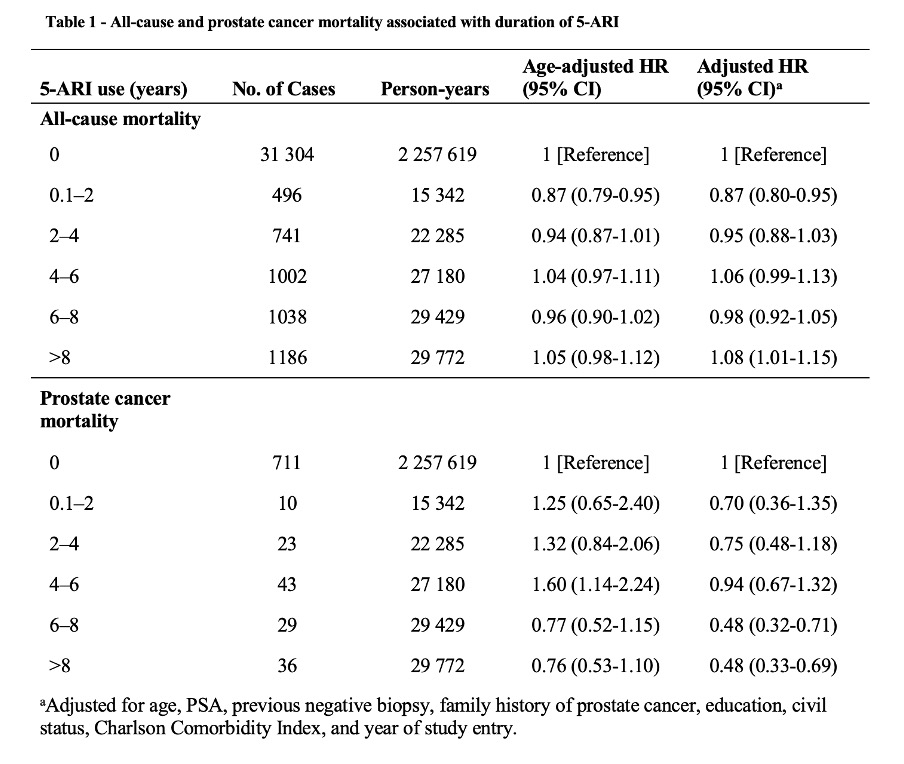Back
Poster, Podium & Video Sessions
Podium
PD03: Prostate Cancer: Epidemiology & Natural History I
PD03-02: Long-Term Effects of 5&[alpha]-Reductase Inhibitors on Prostate Cancer Mortality - a Large Population-Based Prospective Study
Friday, May 13, 2022
7:10 AM – 7:20 AM
Location: Room 245
Lars Björnebo*, Tobias Nordström, Andrea Discacciati, Thorgerdur Palsdottir, Markus Aly, Henrik Grönberg, Martin Eklund, Anna Lantz, Solna, Sweden

Lars Bjornebo, MSC
Karolinska Institute
Podium Presenter(s)
Introduction: There is evidence that 5a-reductase inhibitors (5-ARIs), a standard treatment of benign prostate hyperplasia, decrease the incidence of prostate cancer (PCa). However, studies to date have been conflicting on the effect on prostate cancer mortality (PCM). We aimed to determine the effect of 5-ARIs on PCM in men without a prior diagnosis of PCa.
Methods: This is a population-based prospective cohort study conducted between January 1, 2007 and December 31, 2018 in Stockholm, Sweden. Men with a PSA test within the study period were identified (N = 429 977). Study entry was set to one year after the first PSA test. The final cohort included 349 152 men. After their initial PSA test, men with = 2 new dispensed prescriptions of 5-ARI (Finasteride or Dutasteride) were considered 5-ARI users (N = 26 190). The primary outcome was PCM. Cox proportional hazards regression models were used to calculate multivariable-adjusted hazard ratios (HRs) and 95% CIs for all-cause mortality (ACM) and PCM.
Results: Median follow-up time was 7.6 (IQR, 4.1-9.7) years with 2 257 619 person-years for the unexposed group and 124 008 person-years for the exposed group. The median exposure to 5-ARI was 4.5 (IQR, 2.1-7.4) years. During follow-up, 35 767 men died, with 852 deaths attributed to PCa. The adjusted multivariable survival analysis showed a decreased risk of PCM in the 5-ARI-group with > 6 years of 5-ARI exposure; 6-8 years: (adjusted HR, 0.48; 95% CI, 0.32-0.71), > 8 years: (adjusted HR, 0.48; 95% CI, 0.33-0.69). No statistically significant differences were seen in PCM for 5-ARI exposure shorter than six years. (Table 1) Men treated with 5-ARIs underwent more PSA tests and biopsies per year than the unexposed group, median 0.63 vs. 0.33 and 0.22 vs. 0.12, respectively.
Conclusions: This study shows no association between 5-ARI and increased prostate cancer mortality in a large population-based cohort of men without a previous prostate cancer diagnosis. Additionally, a time-dependent effect was seen with decreased risk of prostate cancer mortality after > 6 years of 5-ARI treatment. Further research is needed to determine whether the differences are due to intrinsic drug effects or prostate cancer testing differences.
Source of Funding: None

Methods: This is a population-based prospective cohort study conducted between January 1, 2007 and December 31, 2018 in Stockholm, Sweden. Men with a PSA test within the study period were identified (N = 429 977). Study entry was set to one year after the first PSA test. The final cohort included 349 152 men. After their initial PSA test, men with = 2 new dispensed prescriptions of 5-ARI (Finasteride or Dutasteride) were considered 5-ARI users (N = 26 190). The primary outcome was PCM. Cox proportional hazards regression models were used to calculate multivariable-adjusted hazard ratios (HRs) and 95% CIs for all-cause mortality (ACM) and PCM.
Results: Median follow-up time was 7.6 (IQR, 4.1-9.7) years with 2 257 619 person-years for the unexposed group and 124 008 person-years for the exposed group. The median exposure to 5-ARI was 4.5 (IQR, 2.1-7.4) years. During follow-up, 35 767 men died, with 852 deaths attributed to PCa. The adjusted multivariable survival analysis showed a decreased risk of PCM in the 5-ARI-group with > 6 years of 5-ARI exposure; 6-8 years: (adjusted HR, 0.48; 95% CI, 0.32-0.71), > 8 years: (adjusted HR, 0.48; 95% CI, 0.33-0.69). No statistically significant differences were seen in PCM for 5-ARI exposure shorter than six years. (Table 1) Men treated with 5-ARIs underwent more PSA tests and biopsies per year than the unexposed group, median 0.63 vs. 0.33 and 0.22 vs. 0.12, respectively.
Conclusions: This study shows no association between 5-ARI and increased prostate cancer mortality in a large population-based cohort of men without a previous prostate cancer diagnosis. Additionally, a time-dependent effect was seen with decreased risk of prostate cancer mortality after > 6 years of 5-ARI treatment. Further research is needed to determine whether the differences are due to intrinsic drug effects or prostate cancer testing differences.
Source of Funding: None


.jpg)
.jpg)